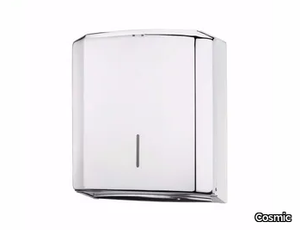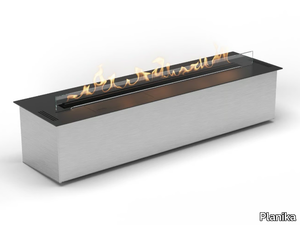PK1 Chair
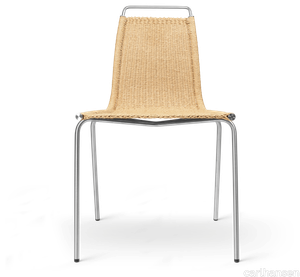
carlhansen > Chair
Poul Kjærholm was one of the star architects behind Danish Modern. With his functionalistic approach to furniture design, Kjærholm cultivated simplicity and lightness. Moreover, as a designer, he excelled at combining his favorite material, steel, with other organic materials. Both qualities are reflected beautifully in the PK1 dining chair.
ARCHITECT 2900218 - U-shaped brass grab bar with paper holder _ Cosmic

Cosmic > Sanitary accessories
PMR
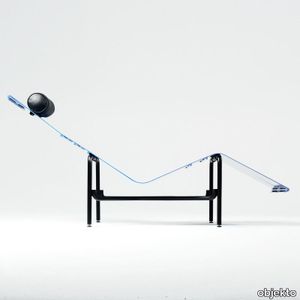
objekto > Chair
Made entirely of steel, the PMR indoor lounge chair is a work created by modernist architect Paulo Mendes da Rocha. " In the middle of the 80’s I visited the spring manufacturer Indústrias de Molas Sueden in São Paulo. A powerful factory of cold bended steel springs bound as well to locomotive as to delicate motor mechanisms. There I saw 25 cm wide steel coils as thin as a paper sheet. I immediately thought of the idea of a human body stretched out on this thin flexible sheet like floating over the ground (Henry Moore!?). To reach the width I needed I put together two sheets while leaving an empty and longitudinal space between these in order to release the spinal column and to allow the body to relax on the muscles. This space also enabled me to fix a small cylindrical cushion for the neck. The transverse bars, which link the two steel sheets, were strategically distributed all over the length of seat in order to enable three different inclinations. I did not make any particular research to achieve it. This idea was born from the continuation of the Paulistano armchair concept. An idea focused on steel flexibility properties." Paulo Mendes da Rocha - December 2009
Kaeko
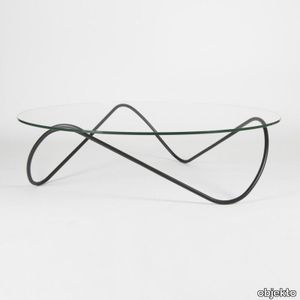
objekto > Coffee table
The Kaeko coffee table, designed by Brazilian graphic designer and architect Rafic Farah, is a simple yet sophisticated piece. Inspired by his fascination for women, Farah gave his Kaeko table stylish and sensual wavy lines. Rafic Farah started to take an interest in the design of objects after taken care of the Doctor Kaeko's cabinet fitment. He decides then to continue designing and manufacturing objects and furniture for his clients and friends: lamps and this coffee table in 1989.Doctor Kaeco is a half-blood Japanese woman, tall with deep black hair. She is characterized by her natural elegance, her optimism and her determination. The graphic structures of these objects are maybe the reflection of her sophisticated and refined appearance: a Chinese ink on a rice paperThe Kaeko coffee table is a perfect illustration of Rafic Farah conception of design: simple and sophisticated at the same time.
Tradition
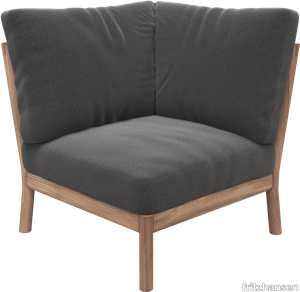
fritzhansen > Armchair
Tradition is a modular lounge series in teak that brings refined sophistication to outdoor spaces. With the versatility to fit any lounging style preference, Tradition’s elegance and comfort are an invitation to unwind. Designed for Fritz Hansen by Danish architect and designer Povl B. Eskildsen. The Tradition Corner Module extends the outdoor lounge set with a generous and comfortable cushioned corner seat. Crafted in the same high-quality materials and dedication to details, the spindle backrest wraps around on two sides and can be securely connected to create a seamless and stable lounge experience. Please note that a different version is available to meet the fire regulations in the UK market. These cushions are upholstered with FR cold foam, which is not weather resistant.
Milk NA1
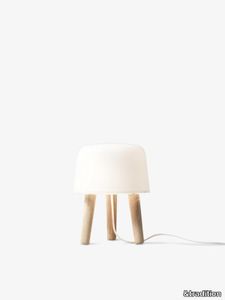
&tradition > Table lamp
Norm Architects finds exciting new ways in an ancient Nordic tradition of wood and glass. Though perfectly suited as a lamp, Milk adds more than light to your home. With Milk it was their intention to create a soft light that could be placed in all corners of the home to create a cozy atmosphere.
8x8 Subtle Yellow - Barcelona Cement Solid Floor Tile
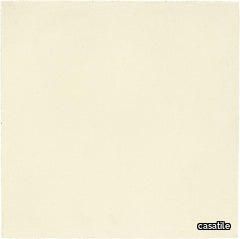
casatile > Floor tile-stone
World-renowned architects and designers have made use of hydraulic cement floor tile in many of their master architectural works. Antoni Gaudí one the greatest Spanish architects of all time, utilized them extensively on several of his commissioned projects.
8x8 Milano - Barcelona Cement Decorative Floor Tile

casatile > Floor tile-stone
World-renowned architects and designers have made use of hydraulic cement floor tile in many of their master architectural works. Antoni Gaudí one the greatest Spanish architects of all time, utilized them extensively on several of his commissioned projects.
8x8 Black - Barcelona Cement Solid Floor Tile
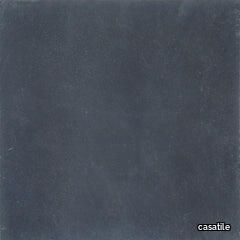
casatile > Floor tile-stone
World-renowned architects and designers have made use of hydraulic cement floor tile in many of their master architectural works. Antoni Gaudí one the greatest Spanish architects of all time, utilized them extensively on several of his commissioned projects.
8x8 White Flour - Barcelona Cement Solid Floor Tile
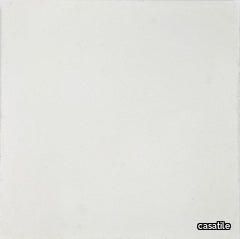
casatile > Floor tile-stone
World-renowned architects and designers have made use of hydraulic cement floor tile in many of their master architectural works. Antoni Gaudí one the greatest Spanish architects of all time, utilized them extensively on several of his commissioned projects.
8x8 Barcelona 4 - Barcelona Cement Decorative Floor Tile
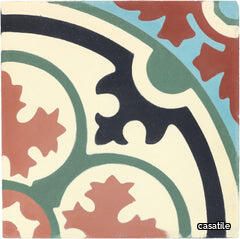
casatile > Floor tile-stone
World-renowned architects and designers have made use of hydraulic cement floor tile in many of their master architectural works. Antoni Gaudí one the greatest Spanish architects of all time, utilized them extensively on several of his commissioned projects.
8x8 Rubi - Barcelona Cement Decorative Floor Tile
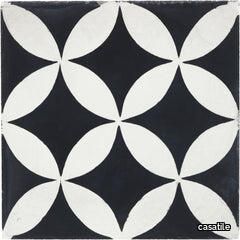
casatile > Floor tile-stone
World-renowned architects and designers have made use of hydraulic cement floor tile in many of their master architectural works. Antoni Gaudí one the greatest Spanish architects of all time, utilized them extensively on several of his commissioned projects.
8x8 Palau - Barcelona Cement Decorative Floor Tile

casatile > Floor tile-stone
World-renowned architects and designers have made use of hydraulic cement floor tile in many of their master architectural works. Antoni Gaudí one the greatest Spanish architects of all time, utilized them extensively on several of his commissioned projects.
8x8 Azuara - Barcelona Cement Decorative Floor Tile
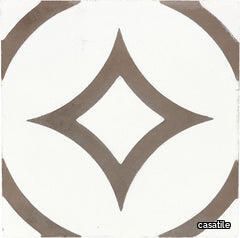
casatile > Floor tile-stone
World-renowned architects and designers have made use of hydraulic cement floor tile in many of their master architectural works. Antoni Gaudí one the greatest Spanish architects of all time, utilized them extensively on several of his commissioned projects.
8x8 Oyster Bay - Barcelona Cement Solid Floor Tile

casatile > Floor tile-stone
World-renowned architects and designers have made use of hydraulic cement floor tile in many of their master architectural works. Antoni Gaudí one the greatest Spanish architects of all time, utilized them extensively on several of his commissioned projects.
8x8 Saragossa - Barcelona Cement Decorative Floor Tile

casatile > Floor tile-stone
World-renowned architects and designers have made use of hydraulic cement floor tile in many of their master architectural works. Antoni Gaudí one the greatest Spanish architects of all time, utilized them extensively on several of his commissioned projects.
8x8 Collblanc 1 - Barcelona Cement Decorative Floor Tile
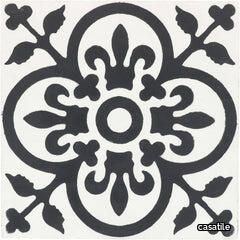
casatile > Floor tile-stone
World-renowned architects and designers have made use of hydraulic cement floor tile in many of their master architectural works. Antoni Gaudí one the greatest Spanish architects of all time, utilized them extensively on several of his commissioned projects.
8x8 Pedrosa - Barcelona Cement Decorative Floor Tile

casatile > Floor tile-stone
World-renowned architects and designers have made use of hydraulic cement floor tile in many of their master architectural works. Antoni Gaudí one the greatest Spanish architects of all time, utilized them extensively on several of his commissioned projects.
Brut Table

fritzhansen > Side table
The Brut Table by TAF Architects is easily recognised by its elegant and slender composition and blank brass feet. Slim and delicate in appearance yet made with powder coated steel. Brut Table can be used as a side or coffee table. The elegant Brut Table is available in two colourways: Royal Blue and Slate Grey. Both versions come with brass feet.
Eames Wool Blanket
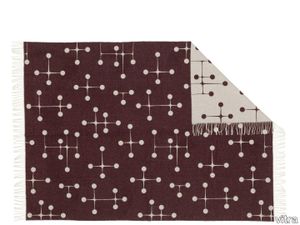
vitra > Styling
Like many other prominent twentieth-century architects and designers, Charles and Ray Eames also sought to implement their ideas about colours, shapes and materials in the design of textiles. The 'Dot Pattern' was created in 1947 in conjunction with an exhibition at the Museum of Modern Art in New York. The pattern is a large-scale graphic composition made up of crosses and dots, thereby referencing the abstract paintings by Ray Eames from the 1930s.<br/><br/>The Eames Wool Blankets are produced in a jacquard weave, which means that the colours of the 'Dot Pattern' are reversed on the front and back. Available in several hues, the wool blankets are made of 100% high-quality Merino lambswool, and are particularly light, fine and soft to the touch while also providing optimal warmth and thermal balance.
Extrema Ikon

flukso > Paneling
Extrema Ikon is an exclusive brand recognized by international architects and designers. Especially conceived for upholstery industry, Extrema Ikon is a coated fabric created by using innovative and high-resistance components, without using phtalates and presented in 24 modern-toned colours. Extrema Ikon has a satin-effect and matt surface resembling lycra, in a range of intense colours, obtained by complex techniques that make all the Extrema collections unique in their category. Laboratory tests carried out on Extrema Ikon show its exceptional durability that comes from the use of innovative high-resistance polymers and flame retardant polyurethanes. Extrema collection is also available in various finishes: Extrema AU, Extrema Crystal, Extrema Metal, Extrema Silver Glass.
Desirée round table diameter 110 height 72 cm
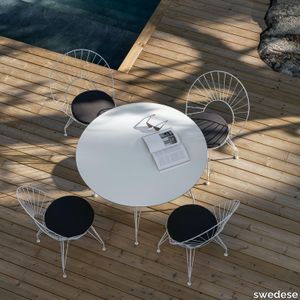
swedese > Table
During the 50s, many architects worked to blur the line between inside and outside. Desirée is the graceful garden table that enables the inside of the home to meet the outside. A beautiful table that fits just as well inside as outside. The table has a frame made of metal that has been lacquered with anti-rust and epoxy lacquer. The table top is made of compact laminate and is available in diameters of 110 and 64 cm.
GATCPAC
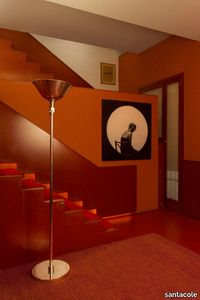
santacole > Floor lamp
The GATCPAC lamp is a tribute to the group of Catalan architects of the same name who sought to modernise the approach to construction during their era. Conceived as a machine à illuminer, members of the group used to leave these lamps as a gift to their customers, symbolic of their modern outlook, by way of a collective signature.
Extrema Crystal
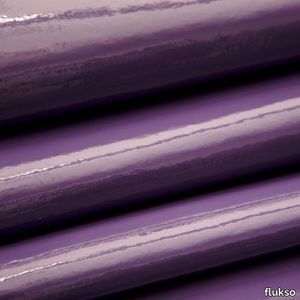
flukso > Paneling
Extrema Crystal is an exclusive brand recognized by international architects and designers. Especially conceived for upholstery industry, Extrema Crystal is a coated fabric created by using innovative and high-resistance components, without using phtalates and presented in 20 modern-toned colours. Extrema Crystal has a smooth, gloss paint-effect and brilliant surface, all the Extrema collections unique in their category. Laboratory tests carried out on Extrema Crystal show its exceptional durability that comes from the use of innovative high-resistance polymers and flame retardant polyurethanes. Extrema collection is also available in various finishes: Extrema AU, Extrema Ikon, Extrema Metal, Extrema Silver Glass.
Extrema Silver Glass
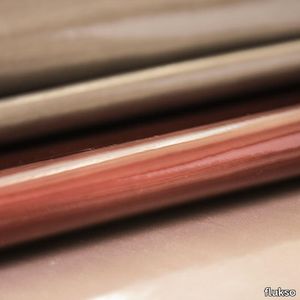
flukso > Paneling
Extrema Silver Glass is an exclusive brand recognized by international architects and designers. Especially conceived for upholstery industry, Extrema Silver Glass is a coated fabric created by using innovative and high-resistance components, without using phtalates and presented in 19 modern-toned colours. Extrema Silver Glass has a smooth, glass-effect surface, glossy and bright, in a range of colours, obtained by complex tecniques that make all the Extrema collections unique in their category. Laboratory tests carried out on Extrema Silver Glass show its exceptional durability that comes from the use of innovative high-resistance polymers and flame retardant polyurethanes. Extrema collection is also available in various finishes: Extrema AU, Extrema Crystal, Extrema Metal, Extrema Ikon.
Bul-Bo

axolight > Wall lamp
In 2019, the architects Fabrizio Pellegrino and Lodovico Gabetti, together with Giuseppe Scaturro and Magdalena Kirova, respectively CEO and art director of Axolight, created a maieutic laboratory (realistically based on the Socratic method of reaching a truth in an authentic way) with the aim of reconstructing the thought of Studio Gabetti and Isola, linked to the original design idea of the Bul-Bo lamp. Among the foundations of this path, the direct stories of the architects Aimaro Isola and Guido Drocco (co-authors of Bul-Bo in 1971), the notes and original drawings of the studio, the memories of Lodovico Gabetti (son and pupil of Roberto Gabetti ) and Fabrizio Pellegrino (student of the Gabetti and Isola studio).
Extrema AU
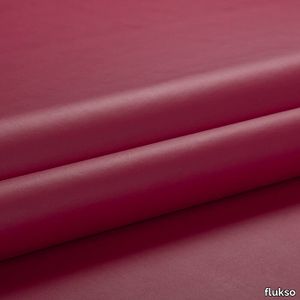
flukso > Paneling
Extrema AU is an exclusive brand recognized by international architects and designers. Especially conceived for upholstery industry, Extrema AU is a coated fabric created by using innovative and high-resistance components, without using phtalates and presented in 48 modern-toned colours. The soft surface, warm to the touch with a matt leather-effect, has been created with modern multi-layer coating techniques on a dyed fabric base, making Extrema AU one of a kind in its class. Laboratory tests carried out on Extrema AU show its exceptional durability that comes from the use of innovative high-resistance polymers and flame retardant polyurethanes. Extrema collection is also available in various finishes: Extrema Crystal, Extrema Ikon, Extrema Metal, Extrema Silver Glass.
Bul-Bo

axolight > Table lamp
In 2019, the architects Fabrizio Pellegrino and Lodovico Gabetti, together with Giuseppe Scaturro and Magdalena Kirova, respectively CEO and art director of Axolight, created a maieutic laboratory (realistically based on the Socratic method of reaching a truth in an authentic way) with the aim of reconstructing the thought of Studio Gabetti and Isola, linked to the original design idea of the Bul-Bo lamp. Among the foundations of this path, the direct stories of the architects Aimaro Isola and Guido Drocco (co-authors of Bul-Bo in 1971), the notes and original drawings of the studio, the memories of Lodovico Gabetti (son and pupil of Roberto Gabetti ) and Fabrizio Pellegrino (student of the Gabetti and Isola studio).
Desirée round table diameter 64 height 72 cm
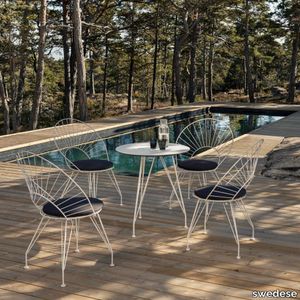
swedese > Table
During the 50s, many architects worked to blur the line between inside and outside. Desirée is the graceful garden table that enables the inside of the home to meet the outside. A beautiful table that fits just as well inside as outside. The table has a frame made of metal that has been lacquered with anti-rust and epoxy lacquer. The table top is made of compact laminate and is available in diameters of 110 and 64 cm.
Miniatures Sitzmaschine

vitra > Styling
Around 1900, the Viennese architects discovered a new means of expression in the bentwood technique. To them, the simple forms of classic bentwood furniture - a consequence of industrial production - anticipated the new aesthetic clarity they were promoting.<br/>Josef Hoffmann's Armchair No 670 combines the austere elegance of bentwood with the expressive formal vocabulary of the Viennese Secession. Its somewhat voluminous form, strict geometry, and adjustable back are attributes that suggest associations with the machine.
Desirée chair
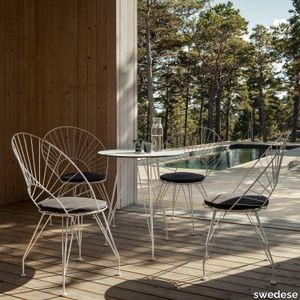
swedese > Chair
During the 50s, many architects worked to blur the line between inside and outside. Desirée is the café chair that makes it possible for the inside of the home to meet the outside. A beautiful cafe chair that is as much in time now as it was then, signed Yngve Ekström. Designed in 1954 with the idea of designing a piece of furniture that can withstand large amounts of water and outdoor use but at the same time functioned just as well indoors. The chair is made of metal that has been lacquered with rust protection and epoxy lacquer. The cushion is included and is available in dark or light gray fabric, suitable for outdoor use as well.
Extrema Metal

flukso > Paneling
Extrema Metal is an exclusive brand recognized by international architects and designers. Especially conceived for upholstery industry, Extrema Metal is a coated fabric created by using innovative and high-resistance components, without using phtalates and presented in 24 modern-toned colours. The bright and warm surface with its metallic effect has been created with modern multi-layer coating techniques on a dyed fabric base, making Extrema Metal one of a kind in its class. Laboratory tests carried out on Extrema Metal show its exceptional durability that comes from the use of innovative high-resistance polymers and flame retardant polyurethanes. Extrema collection is also available in various finishes: Extrema AU, Extrema Crystal, Extrema Ikon, Extrema Silver Glass.
Bul-Bo

axolight > Floor lamp
In 2019, the architects Fabrizio Pellegrino and Lodovico Gabetti, together with Giuseppe Scaturro and Magdalena Kirova, respectively CEO and art director of Axolight, created a maieutic laboratory (realistically based on the Socratic method of reaching a truth in an authentic way) with the aim of reconstructing the thought of Studio Gabetti and Isola, linked to the original design idea of the Bul-Bo lamp. Among the foundations of this path, the direct stories of the architects Aimaro Isola and Guido Drocco (co-authors of Bul-Bo in 1971), the notes and original drawings of the studio, the memories of Lodovico Gabetti (son and pupil of Roberto Gabetti ) and Fabrizio Pellegrino (student of the Gabetti and Isola studio).
Stone LED Pendant Light

tomdixon > Ceiling lamp
This hard, semi-precious surface has transfixed architects, sculptors and designers for millennia. Marble is the dream material - tough yet tactile, heavy and long-lasting with individual personality. This year, the Stone family receives an upgrade with a new Tom Dixon LED module.
Stone Wall LED Light
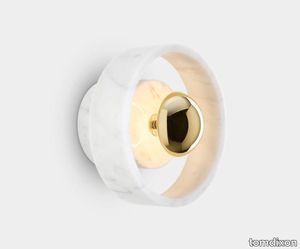
tomdixon > Wall lamp
This hard, semi-precious surface has transfixed architects, sculptors and designers for millennia. Marble is the dream material - tough yet tactile, heavy and long-lasting with individual personality. This year, the Stone family receives an upgrade with a new Tom Dixon LED module.
Stone Stacking Candleholder White

tomdixon > Styling
This hard, semi-precious surface has transfixed architects, sculptors and designers for millennia. Marble is the dream material - tough yet tactile, heavy and long-lasting with individual personality. This year, the Stone family receives an upgrade
Extrema Wave
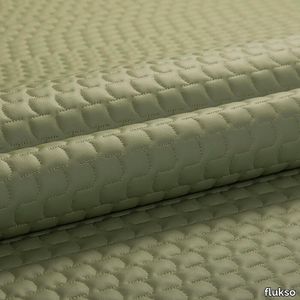
flukso > Paneling
Special processing for Extrema AU, a brand recognized by international architects and designers. Extrema Wave is made by continuously quilting an exclusive Flukso pattern with contemporary style, which makes it even softer, giving it a threedimensional look. Extrema Wave is available on stock in 8 different colours. It can be ordered and produced by roll in all 48 colors from Extrema AU collection. Extrema Wave is matching to Snob FR, a cotton blend and polyester velvet from Flukso collection, available in 35 different colours.
Shelving unit Transistor
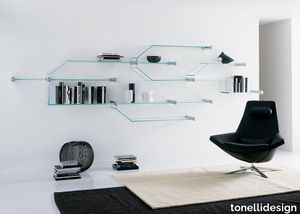
tonellidesign > Cabinet
The shelving unit Transistor is made in extra clear or transparent glass, it features an articulated structure and is born from the combination of several elements of variable dimensions, linked by aluminium anodized joints. Created by architects Barberini & Gunnell, the shelving unit Transistor is able to host several storage surfaces, becoming an actual designer complement, that can give a contemporary touch to studios and lounges.
Stone Bookends White x 2
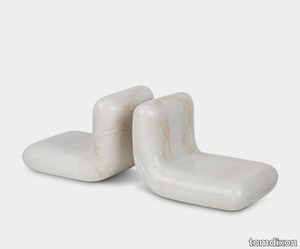
tomdixon > Styling
Bookends in heavy, white marble with rounded curves and a unique fingerprint. Equally sculptural and functional. More Information This hard, semi-precious surface has transfixed architects, sculptors and designers for millennia. Marble is the dream material - tough yet tactile, heavy and long-lasting with individual personality. This year, the Stone family receives an upgrade
P376 KF1
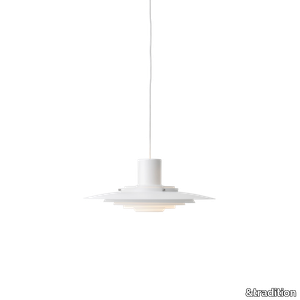
&tradition > Ceiling lamp
Jørgen Kastholm (1931-2007) and Preben Juhl Fabricius (1931-1984) were driven by a mutual mission to make form a pure derivative of function. Both were architects, graduating from the Danish School of Interior Design where they studied under Finn Juhl and subsequently with Arne Jacobsen. The P376 pendant lamp is a perfect example of Kastholm & Fabricius’ subtle architectural slant on design. Originally conceived in 1963, five concentric shades create gradations of curves towards the middle of the lamp to emit a soft, diffused light. The discrete placement of the shades and the silky aluminium finish culminate in a cohesive expression that’s both iconic and enthralling.
P376 KF2
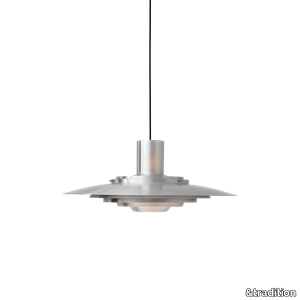
&tradition > Ceiling lamp
Jørgen Kastholm (1931-2007) and Preben Juhl Fabricius (1931-1984) were driven by a mutual mission to make form a pure derivative of function. Both were architects, graduating from the Danish School of Interior Design where they studied under Finn Juhl and subsequently with Arne Jacobsen. The P376 pendant lamp is a perfect example of Kastholm & Fabricius’ subtle architectural slant on design. Originally conceived in 1963, five concentric shades create gradations of curves towards the middle of the lamp to emit a soft, diffused light. The discrete placement of the shades and the silky aluminium finish culminate in a cohesive expression that’s both iconic and enthralling.
Rouge Antique Marble Slab 3/4" Polished Stone
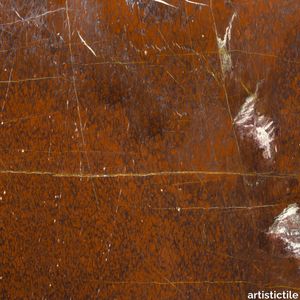
artistictile > Floor tile-stone
Sourced from an ancient French quarry, Rouge Antique has long been a favorite of European sculptors and architects. It is used extensively in the palace of Versailles and throughout elite European architecture dating back to antiquity. A cultural symbol of tradition and refined taste, Rouge Antique’s colorful patterns are highly varied. Stocked in 2cm polished slabs.
MVV

marset > Ceiling lamp
The MVV story begins in the 1970s. This new suspension lamp is a first, and was designed by Manuel Valls Vergés, one of Spain’s most notable architects at the time and partner of Jose Antonio Coderch for 15 years, alongside whom he undertook such prominent projects as the Ugalde house, near Barcelona. The MVV name reflects Vergés’ initials, as a way of displaying his authorship of this unique lamp. That was the desire of his grandson, also an architect, and of his partners in the Two-bo studio. Pablo, María and Alberto rescued this lamp 45 years later.Marset, acting as a bridge in time, took the original design —an octagon with overlapping sheets— and updated it by giving it a dual skin: cherry wood on the outside of the sheets and a white colour inside to enhance the light quality. The measurements are the same as the original’s —45 cm— and the interior structure, which was originally made of iron, is now polycarbonate, which makes it lighter. Through the use of wood, the MVV yields an exceptionally warm light. An understated, rational and eminently geometric lamp —the MVV is like a construction site, in which the direct, down-facing light is complemented by indirect light that filters through the sheets. A design that, though timeless, reflects the constructive logic of that period and evokes a great many memories.
LASOSPESA

fontanaarte > Table lamp
FontanaArte calls Stefano Boeri Architetti and launches "lasospesa", the new table lamp. For one of the most important Milanese architects in the world, whose Bosco Verticale is one of the most representative and iconic projects of our time, trying a lamp was an interesting change of scale. Like FontanaArte: historic and contemporary Milan, elegant entrances and new buildings, fashion and major art exhibitions. Like FontanaArte's art: it finds form in an object that does not preclude function and from which a light comes to life. lasospesa is in fact a symmetrical table lamp, born from the elementary principle of the incorporation of two cylinders: a cylinder of primary light suspended in a cylinder of diffused light. "A non-lamp with numerous uses and iridescent luminosity, very simple and classic, lasospesa seems to have always been there, where you placed it" says Stefano Boeri.
Le Klint 17
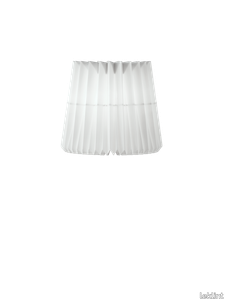
leklint > Ceiling lamp
Model 17 was designed by the American designer Robert Kasal, who spent some time in Denmark in the 1960s. Robert Kasal worked for the architects Peter Hvidt & Orla Mølgaard-Nielsen in the 1960s and participated in the development of many Le Klint models that went into production during that period. He later returned to the USA and continued to design lamps under his own name.
Alluminate Collection

antolini > Floor tile-stone
Alluminate reveals Antolini® natural stone in all its individual splendour. Thanks to a unique machining process that significantly reduces the thickness of the slab without altering its aesthetics or strength, the material can be backlit thereby offering architects, designers and artists an extremely striking yet sophisticated product.
Matrice Traccia
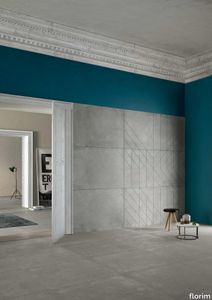
florim > Wallcovering
An atlas of modular signs to be combined in a wide variety of layouts. «We love concrete as a material, its versatility and its plain, austere look. We have completed our carefully designed surfaces with graphic patterning inspired by the human actions of weaving and embroidering.» Barbara Brondi & Marco Rainò To appreciate the profundity of the design project undertaken by Barbara Brondi and Marco Rainò for Cedit, it is both necessary and explanatory to start from the title the collection bears. In modern usage the term Matrice, in Italian, refers to a die or mould used to reproduce an object, but its origins are much more remote, with a meaning closer to the English “matrix”, meaning the underlying basis of something. The root of the word is related to Mater or mother: the name Matrice thus relates to the origin or cause of something. This dichotomy is expressed in several levels within the work of these architects, who study the world from a sophisticated conceptual approach and then transform it into a design. Starting from the idea of ceramic coverings, which have always been a tool not so much of architecture as of interior design, the artists work back to the origin of the surface and its decoration within their own discipline: they look at what we used to call the modern age, where modernity has also brought an uncompromising brutality, and where the use of bare concrete became the statement of an attitude to life with no time to spare for manners. Concrete is originally a liquid material, intended for shaping, which can therefore absorb and retain any type of mark created by the material and mould used to form it. Architects midway between rationalism and brutalism have used the rough-and-ready language of concrete combined with a last, elegant, anthropic decorative motif impressed on the material, that makes the concept of covering superfluous, because its place, in its older meaning of decoration rather than functional cladding, is taken by the regular patterning created in the material itself. There are therefore various grounds for believing that, in this collection, the artists are once again working in architectural terms. Firstly, with a simplicity typical of BRH+, they reduce the initial concepts to their minimal terms. So although this is a collection of coverings for walls, indoor floors, outdoor pavings and curtain walls, a great deal of time was spent on destructuring the idea of the ceramic covering itself. Unfortunately, nowadays there is no space in the contemporary construction sector for the radical approach of the past, so the cladding designed for the building actually lays bare the interior, using the choice of material – accurately interpreted (with shade variation) on the basis of an assortment of various types – to restore visual elegance and a fundamental severity. Attention to scale is another architectural feature: Matrice offers modules with architectural dimensions and different sizes through the development of “large slabs”, eliminating the visual regular grid effect. Thanks to this visual reset, geographic forms are perceived to emerge from dense, grey concrete surfaces decorated as in bygone days by special processes and by weathering during drying. The various types of slab, each an atlas of subtle, vibrant signs on the surfaces, comprise finishes that reproduce the visual effect of reinforced concrete – with the aggregates in the cement more clearly visible, of formwork – with the signs impressed on the concrete by the timber used, of a structured surface resembling bare cement plaster, of ridged and streaked surfaces – with patterning resembling some kinds of linear surface finishing processes – and finally a smooth, or basic version, over which Matrice exercises the dichotomy referred to earlier. It is on these surfaces that Brondi and Rainò have imagined additional design reverberations, a figurative code that rejects the concept of the grid, previously inseparable from that of the module: by means of a vocabulary of graphic marks cut into the slabs with a depth of 3 mm (the width of the gap left between modules during installation), they provide a framework for infinite combinations of possible dialogues. Just as in embroidery, which is based on grids of stitches and geometric repetitions, and where every stitch is at right-angles to another one to construct forms and decorations. Also taken from embroidery is the idea of introducing a degree of “softness” to reduce the stiffness of intentionally deaf surfaces. There is the impression of patterns that can continue for infinity, as in textile weaving, and a scale that, unlike the surface being worked on, is imagined as suspended and lightweight. They may not admit it, but BRH+ know a lot about music, including electronic music, and it appears to me that this organised tangle of infinite signs – unidentifiable without an overview – is rather like the representations of synthesized sounds. Sounds that are produced by machines, and thus “woven” by sampling and overlapping sounds of the most unlikely origins, combined to form jingles which, once heard, are imprinted indelibly on the brain. This may be why I am so interested in the space between this “melodic film” and its deaf, damp substrate. The eyes can navigate this suspended reality without fear of disturbance. So we are faced with different surfaces, different sizes and different graphic signs. But only one colour (surprise!) to prevent a cacophony not just of signs but also of possible interpretations: the artists retain their radical principles (and their generosity), and as curators, a role in which they are skilled, they leave the players (architects and installers) to add their own interpretations. In their hands this colour, expressed in Matrice, will produce motifs on surfaces in living spaces for someone else. This stylish covering and its workmanship will be left to the hands of someone who will probably never read this, but will be on a building site, with the radio playing on a stereo system, concentrating on installing the very pieces we describe. So a radical, apparently silent, design project like this has repercussions for the real world we live in. Matrice has no form of its own but merely acquires the ornamentation drawn on its surfaces by a second group of artists. And here this routine action, standardised by the form approved for production and workmanlike efficiency, is the origin and cause of change, generating a variability of choices and interpretations, on that dusty building site where music plays and mortar flows.
Selandia Chair
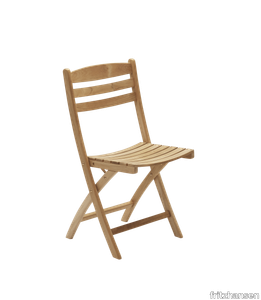
fritzhansen > Chair
The Selandia series is known for its signature slight curves and elegant Nordic look with subtle French references that hint at long summer nights in the open air. The 100% FSC-certified teak Selandia Chairs are elegant, comfortable and take up a minimum of space when folded. Finely detailed with all slotted screws facing the same direction. Simply good craftsmanship. Designed in collaboration with Danish architects Anders and Lars Hegelund.
